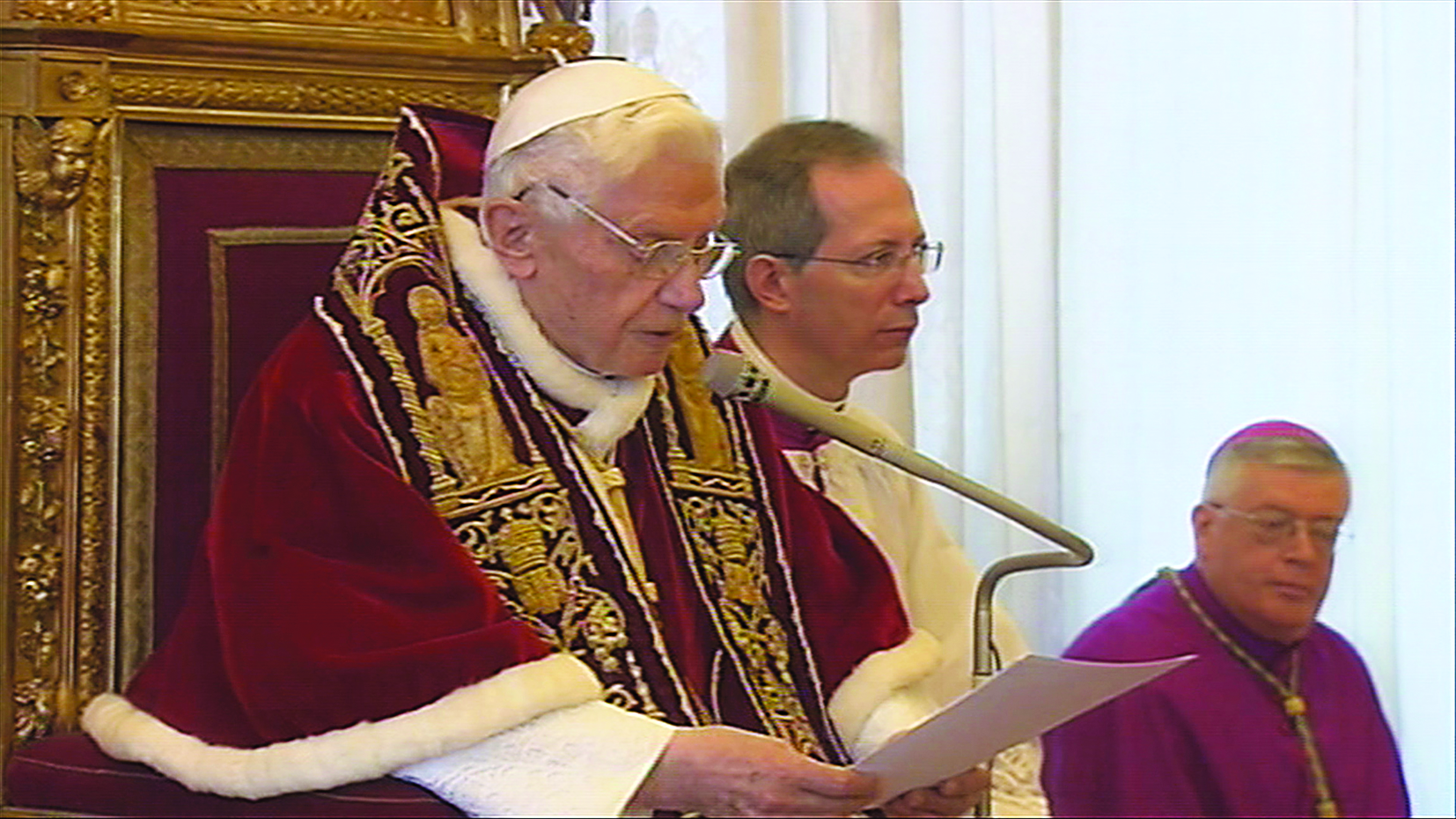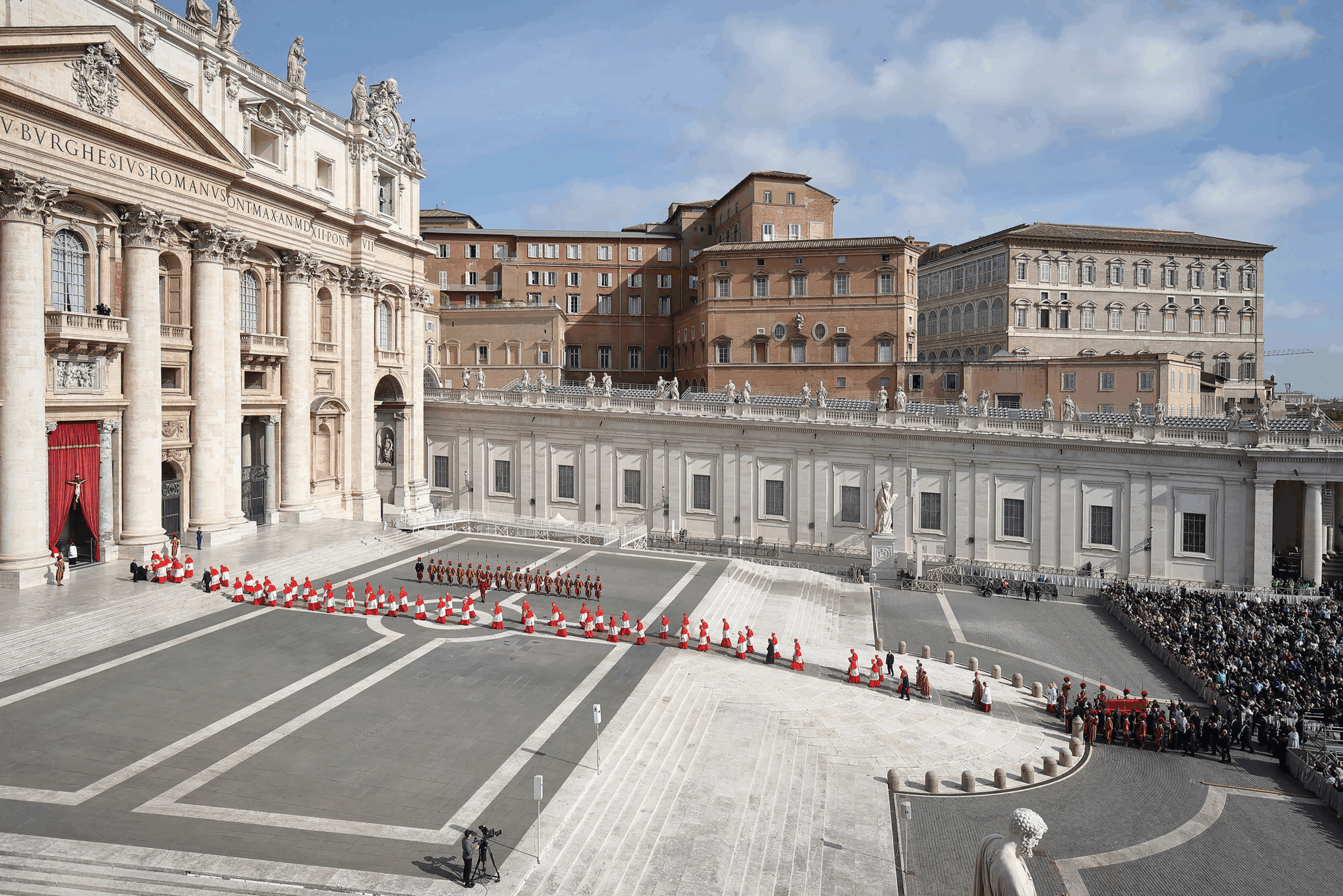By Federico Lombardi

February 11, 2013 —The Vatican. Pope Benedict XVI attends a meeting with cardinals and announces, in Latin, that he will resign at the end of the month (CNS photo/L’Osservatore Romano via Reuters)
When on February 11, 2013, at a consistory convened to set a date for the canonization of the martyrs of Otranto, Benedict XVI unexpectedly read in Latin a declaration of his desire to renounce the position of Pope, the surprise was great throughout the world, because very few people were prepared for it: “After having repeatedly examined my conscience before God, I have come to the certainty that my strengths, due to advanced age, are no longer suitable for the proper exercise of the Petrine ministry.”
The Pope said briefly, but with full clarity, that he felt a decrease in “vigor of both body and soul,” which made him unable “to administer well the ministry entrusted to him,” keeping in mind the demands of Church government “in today’s world, subject to rapid change and agitated by issues of great relevance to the life of the Church.” The renunciation is made “in full freedom,” and the Sede Vacante would begin February 28, 2013, at 8 p.m.
Rivers of ink have flowed about this renunciation and his motivation, but the act was simple, and the reasons given by Benedict XVI are obvious and entirely plausible: it involved a great act of responsibility before God and the Church. This was an act of humility in the face of the immense demands of the Petrine office and of courage in opening a path that was already provided for in Church law, but for centuries no one had traveled. The election of the pope is for life, but the pontificate does not necessarily have to last until the Pope’s death.
The “novelty” of the renunciation was considered by many to be a “historic” act that revealed with particular clarity the farsightedness and spiritual greatness of Benedict XVI, and in this light helps one to reread the entire pontificate with more attention and depth.
Before Easter the Church would have a new Pope. The time following the resignation is known to all: a time of prayer for the Church, of confidential personal contacts, of very rare written interventions, and above all of preparation for the meeting with the Lord.
The benevolence and attention of Pope Francis, the discretion and prayerfulness of the “Pope Emeritus,” all allowed the Church to appreciate a situation that had been unprecedented since the Middle Ages and to sincerely enjoy a shining example of Christian fraternity. The beautiful images of the embraces and prayers in common of the two figures dressed in white were a far greater source of consolation than the attempts — unsuccessful and malicious — to pit Benedict against Francis.
The horizons of Joseph Ratzinger’s thought and ecclesial service expanded during the course of eight decades, from his native Bavaria to the ends of the world, as his gaze focused on the fascinating and mysterious face of Jesus, until the moment of the Encounter. The legacy he leaves us is that characteristic of a theologian called to the See of Peter, who confirmed his brethren in the faith through teaching, sacramental service and the witness of life.
“My strengths are no longer suitable for the proper exercise of the Petrine ministry”

February 28, 2013. A helicopter carrying Pope Benedict XVI takes off from inside the Vatican on its way to the papal summer residence at Castel Gandolfo (CNS photo/Stefano Rellandini, Reuters)






Facebook Comments